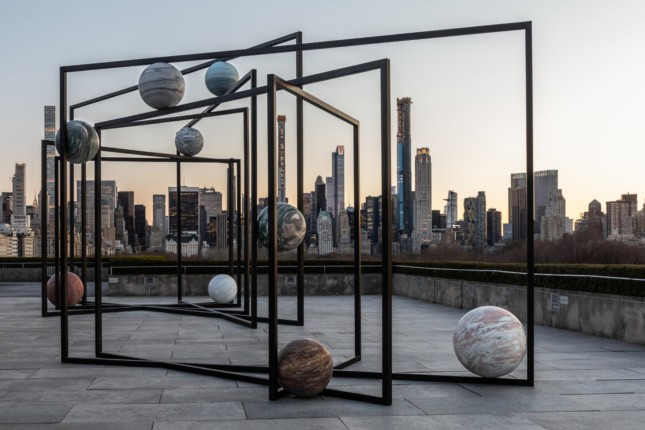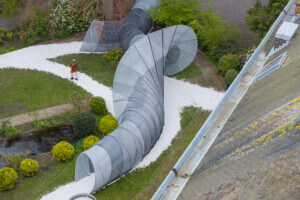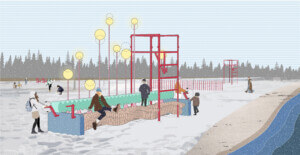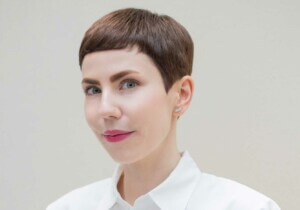An astronomical ballet has landed on the roof of Manhattan’s Metropolitan Museum of Art for the summer. The 2019 Roof Garden commission has gone to Polish-German artist Alicja Kwade, who has installed two stark sculptural interventions in the space overlooking Central Park; ParaPivot I and ParaPivot II, which will be on display through October 27.
The Berlin-based Kwade has suspended nine marble spheres, each mined in a different country, including Norway, Finland, and Brazil, and uniquely veined and colored, in a simulacrum of our solar system. Each planetoid weighs between a hefty half-to-one-and-a-half tons, but have been effortlessly elevated by angular, interlocking powder-coated steel frames.
The color and patterning of each carefully-selected stone mimic the most well-known features of each planet. (The nine planets represented include Pluto, which was demoted from planet-status in 2006.)

As the frames fan out from a central point, the spheres’ arrangements suggest the elliptical, wobbly orbits found throughout our solar system, with many of them playfully balanced and wedged between the scaffolding. The Met describes the ParaPivot structure as evoking the “astrolabe, a scientific instrument invented in ancient Greece and perfected by Islamic astronomers in the medieval period to chart the trajectories of the stars and planets.”
However, the piece is site-specific for a reason. Each rectangular scaffold creates a curated view of the Manhattan skyline, and both frames the city as well as suggests a “support” that holds it up. The effect is meant to tie the Earthly setting to the astronomical theme.
Unfortunately, because of the delicate interplay between stone and steel, visitors aren’t allowed to walk underneath either ParaPivot.
















